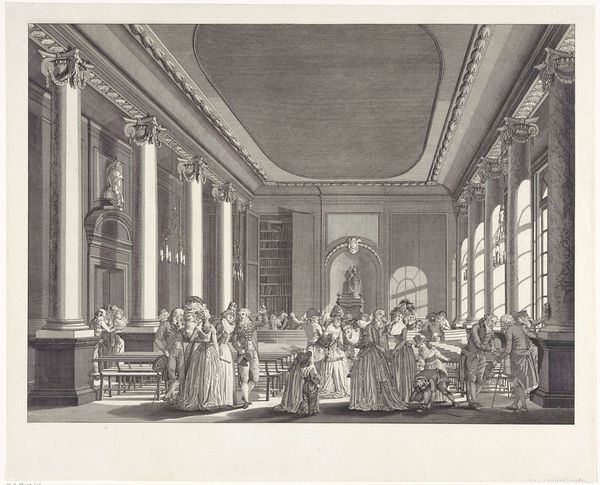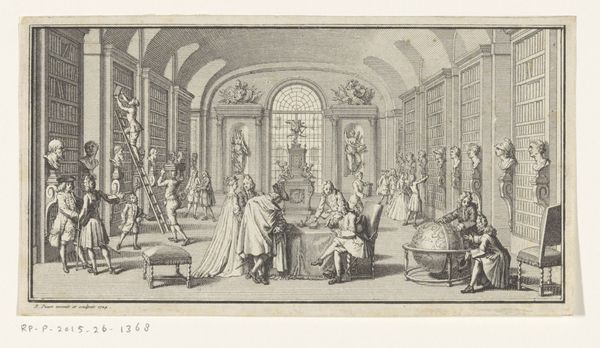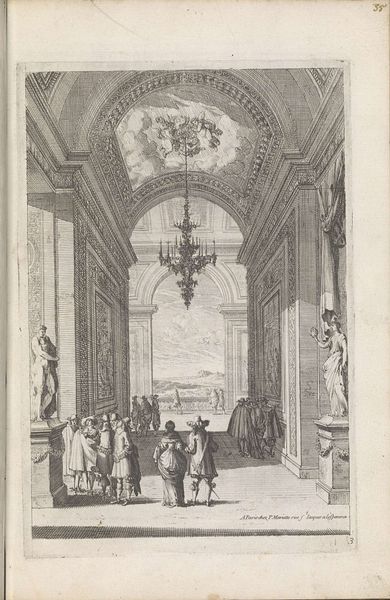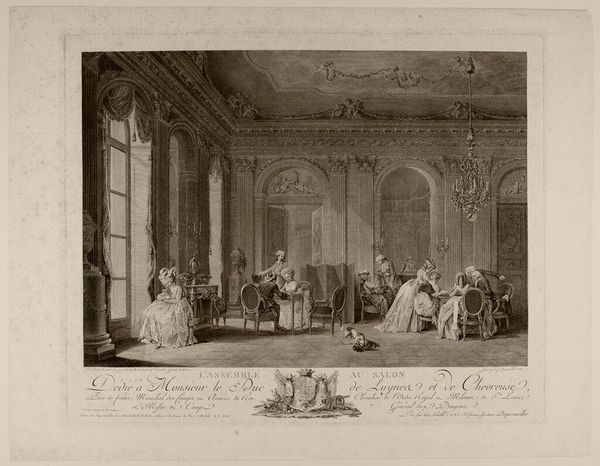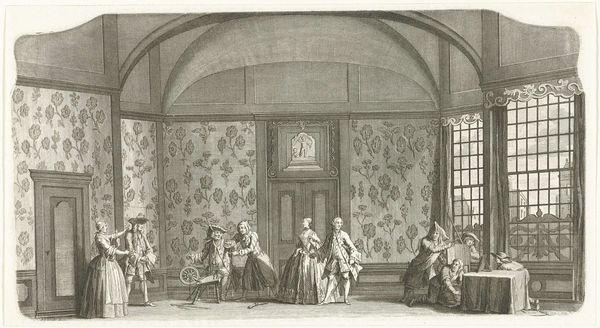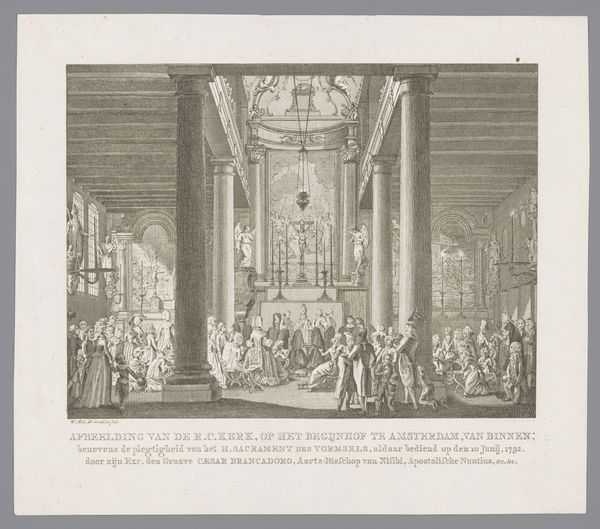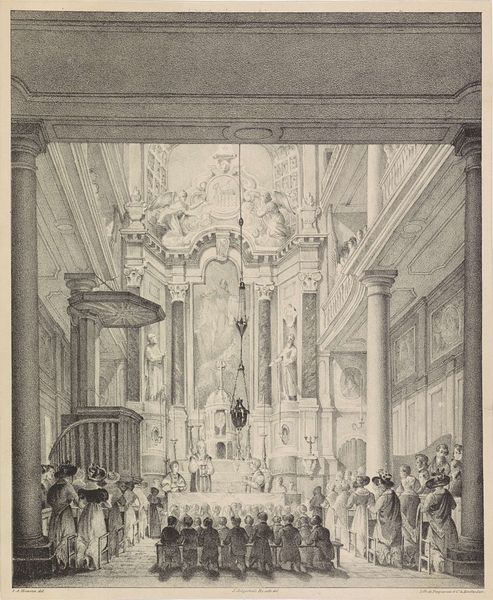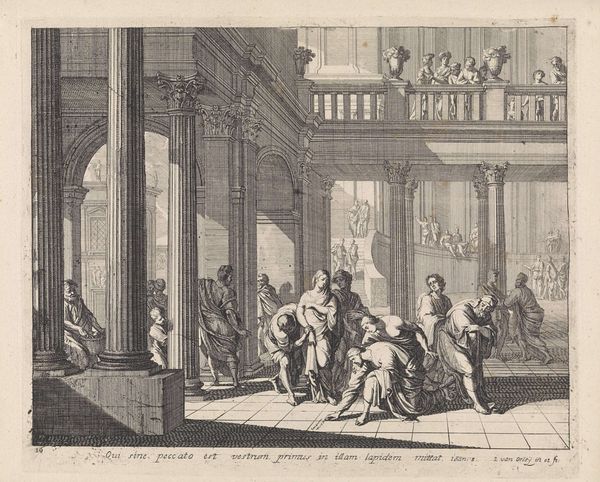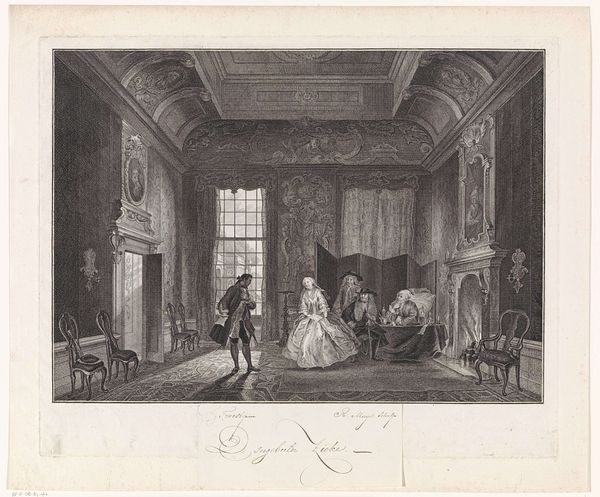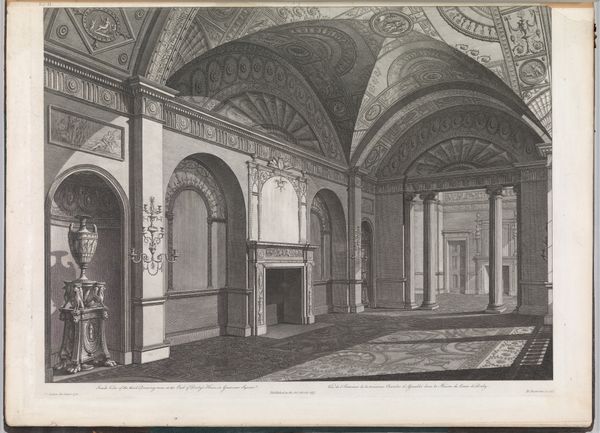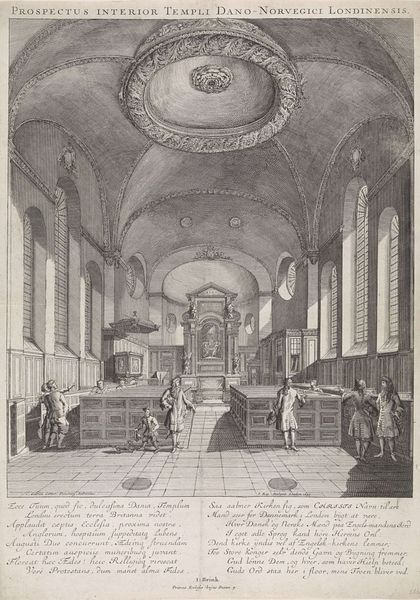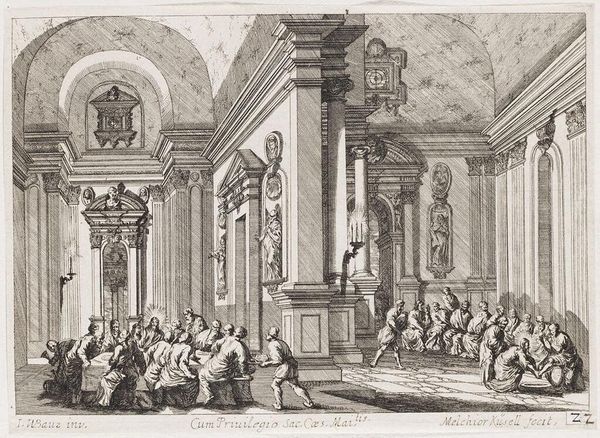
print, engraving
#
narrative-art
# print
#
old engraving style
#
figuration
#
romanticism
#
19th century
#
history-painting
#
engraving
Dimensions: height 98 mm, width 262 mm
Copyright: Rijks Museum: Open Domain
Curator: Before us, we have an engraving titled "Melanie, of De rampzalige kloosterdwang." It's dated between 1770 and 1825. Editor: The sheer drama leaps out! You feel the confinement of that large, echoing space despite the order it tries to project. A chilling environment… Curator: Precisely. The piece uses a meticulous engraving technique that emphasizes the architectural structure – notice how the linear details in the vaulted ceilings and Gothic arches frame the central figures, creating a stage-like setting. Editor: A stage indeed, ripe with implied narrative. I'm particularly drawn to the central figure, Melanie. Her struggle against the nuns and the imposing figures to the right embodies the broader struggle against institutional oppression and patriarchal control prevalent at the time this work was made and depicts. Curator: A valuable interpretation. If we analyze it from a Formalist lens, the use of light and shadow heightens the dramatic tension. The light source seems ambiguous, but it strategically illuminates the figures embroiled in conflict. Editor: Yes, and that tension can be read as the fight for bodily autonomy against the dominating monastic power. Her clothing and body language signal not just her personal desperation, but are symptomatic of broader social critiques regarding gender and imposed social roles. The “rampzalige kloosterdwang," that "disastrous convent coercion," that the artwork's title mentions… Curator: Notice the details of the clothing on the male figure to the right and how the contrast of these figures pushes them forward in the compositional field, suggesting this idea you presented earlier that this conflict can also be read through a gendered, or patriarchal lens. Editor: That formal observation reinforces my socio-political argument. The stark architecture further embodies an intellectual space of confinement. Considering contemporary debates around institutional power during this period contextualizes this composition of line, tone, and shadow beyond mere representation; it embodies the spirit of resistance against such controlling institutions. Curator: I concede that there is an inherent political dimension within that reading. We have explored formal composition but have revealed more layers to it in context. Editor: So, despite our diverse positions we arrive in agreement on the piece's multiple qualities, that’s how dialogues and different interpretative strategies benefit our understanding.
Comments
No comments
Be the first to comment and join the conversation on the ultimate creative platform.
